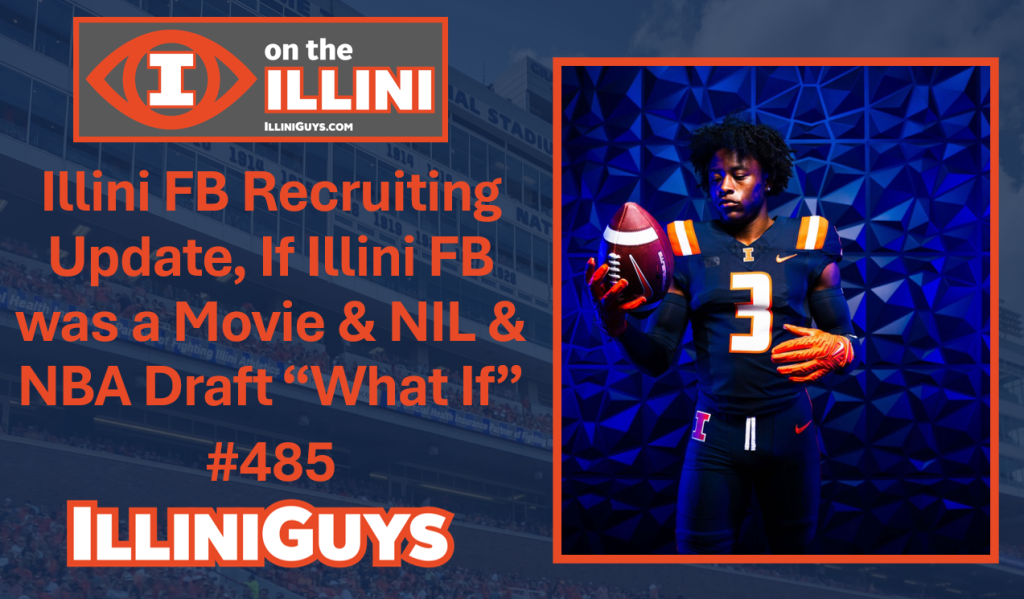
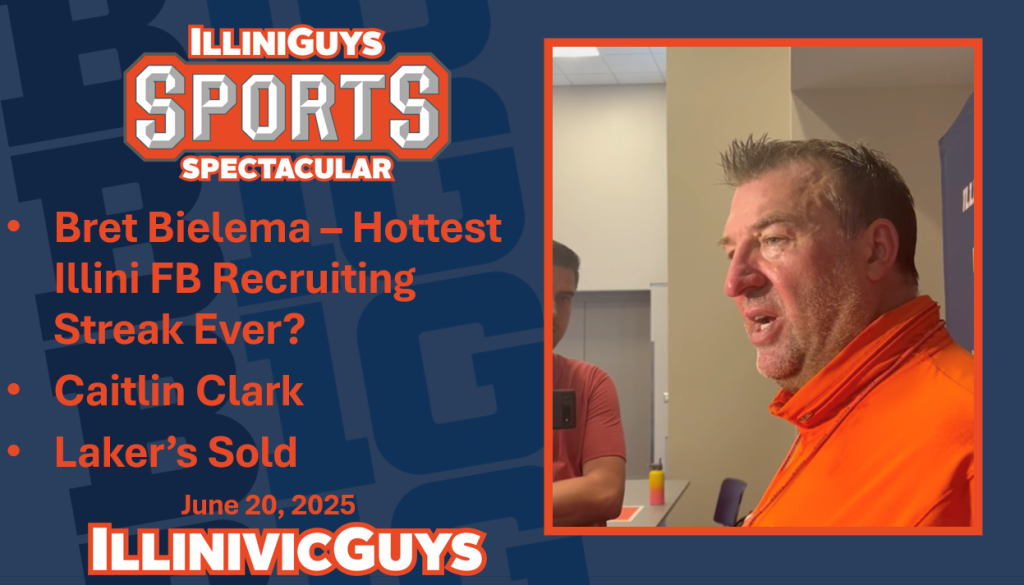
Mike Cagley, Co-Host IlliniGuys Sports Spectacular and Big Sports Radio
June 5, 2023
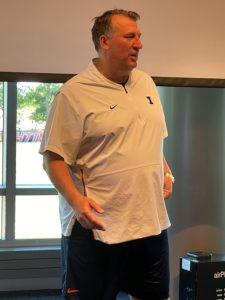
Bret Bielema courtesy Mike Cagley, IlliniGuys
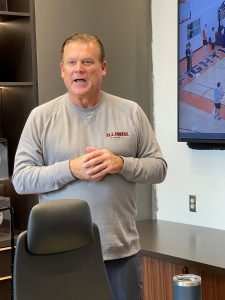
Brad Underwood courtesy Mike Cagley, IlliniGuys
Today’s NIL environment, coupled with the ability of players to transfer without sitting out a year (the first time they transfer) is forcing coaches to evaluate how they deal with this new landscape. This new landscape has radically altered the balance of power between college coaches and their players. This leaves coaches to figure out how to best respond to this new power structure and players need to really understand what their objectives are, not just for college but beyond because of the power of NIL to fuel an “economic boost” to begin their lives after college.
Collegiate coaches must adapt to the new realities and the new balance of power that exists thanks to both the transfer portal and the NIL money that has been introduced into the system. The coaches who adapt the quickest and the most will be in a position to either maximize their team's success or improve their team's overall standing in the coach's particular sport.
Today, let’s look at some of the areas that will change for coaches compared to the past in collegiate sports.
With the ability of players to transfer without sitting out for a year upon their first transfer, it means that coaches need to have closer relationships with their entire roster. In football with 85 scholarship athletes, there are only so many relationships a head coach can have – but in either sport – relationships with contributors need to be strong and in place from day one. Expectation setting will be a must - both in the recruiting process and once they arrive on campus.
Players will have people around them pressing the player to “get theirs” in terms of more NIL funds, they’ll have others complaining about their playing time or how they’re being used by the staff, and they’ll have opportunities presented to them by other teams using backchannels (through a high school or AAU coach) trying to break their commitment to their current school.
Head coaches who choose to “stay above it all” will find it difficult to maintain that relationship style without opening their roster up to potential turnover. The quality of the relationship of position and assistant coaches to their players will still be critical for player retention. This won’t change. The head coach's relationship to individual players will be even more important - and the head coaches who can build relationships with their players will have a clear advantage over those coaches who either choose not to do build those relationships or those who are unable to fully develop those relationships.
Simply put, the head coaches are going to need to know their players on a deeper level than the head coaches of the past. Particularly, when a player is “waiting” behind other talented players for his/her turn to contribute on the court/field. Through backchannels, other schools will offer playing time, possible NIL opportunities and will strive to appear to show more respect for a player who is currently riding the bench. A strong relationship and understanding of the coach's plan for a player is one way to attempt to offset the backchanneling that will happen to players who aren't playing or who appear to be unhappy with their current role.
The head coach who sits in the office and only really knows the starters is going to have a really hard time developing continuity in his/her program. A “players coach” mentality will be needed.
There were coaches who were famous for making the final recruiting pitch via cell phone from the golf course. I don’t know if the role of head coach "only" being the closer at the end of a recruitment will survive, either. The coaches who are good communicators will be texting, calling, and Zooming from the start of the recruiting process to the end of the recruiting process (within NCAA rules of course). If a coach isn’t a person who likes communicating with 17- and 18-year-old high school seniors, the job is going to be much more difficult because those who thrive in that role will excel at recruiting.
In the end, even the best recruiters (either position or assistant coaches) will need the head coach to close the deal. In today’s much less formal and more “player centric” collegiate sporting world, the ability to close will require a coach to:
The requirement of gaining a commitment will no longer able to be executed on one phone call or in one encounter of having a player stop by the head coach’s office. It will require an ongoing relationship that has been built over time. And the head coach must be ready to "drop into" the process when a position or assistant coach calls upon him/her to do so. There is an old sales adage that people buy from other people that they like. With recruiting and the ease of transfers, coaches will need to be closer to their individual players more than at any other time in collegiate sports history. For coaches, being liked by your players still isn't as important as being respected, but it is much closer to respect than it's ever been.

Shauna Green during Ubben tour flanked by Scott Beatty. Photo courtesy of Mike Cagley, IlliniGuys.
Players want to get better and have their own set of personal goals. Some want to be the best collegiate player they can be. Most want on court or on field success as a team. A few expect to be drafted by the NBA or the NFL and need to squeeze every drop of improvement out of their college experience. Of course, many will have a combination of these goals in mind when they select a school.
The schools that are most successful will have the demonstrated capability of developing players for success on the court/field, success as a team, and former players enjoy success in the NBA, NFL, or other professional leagues. The more players who are making money playing the game somewhere professionally, the more attractive the school is for the next generation of recruits. As a general rule, players have to improve their skills and their physical conditioning to accomplish those goals.
With the addition of two more assistant coaches in basketball, it will be critical for the staff to have the ability to add to a player’s game. Each player's off season developmental focus should be easy to point out by watching the player during the current season to see what he/she has added to their game and improved compared to the prior season. Even the head coach should be able to contribute to this effort. Measurable player improvements are a key marketing tool for any program.
Rick Pitino, the current St. John’s head coach is famous for his incredible skills sessions in the gym. The individual and small group workouts are a key to Pitino’s recruiting pitch. He credits those as a reason why his teams have been so successful over the years and why he’s put many players in the NBA. Unlike most head coaches, Pitino refuses to delegate those to assistant coaches and runs two to three of those sessions daily.
Pitino told the Athletic’s Seth Davis, “I love doing it, and I’ve been doing it for over 30 years. Our number one recruiting tool is player development. They hear stories about Donovan Mitchell coming to Louisville without a jump shot, and leaving as a great shooter. So I work them out on their visits, or at least I make them watch me work out my own guys. They all say they want to be pros, so I show them how I can help them get there.”
At Illinois, Fighting Illini basketball features Adam Fletcher who is widely regarded as one of the nation’s top strength and conditioning coaches. Illini football has Tank Wright who is developing a similar reputation. Excellent strength and conditioning coaches are a key differentiator that can be used to set the program apart from competitive schools.
Head coaches must determine what their program will be known for and then chart a course to make sure they have the coaching staff (including their own efforts) to make their vision a reality. Achieving a differentiator in recruiting is critical to a program's success.
Today’s transfer portal world means that there is a reliable way to restock a roster quickly and at least for now, players coming from the portal won’t be able to transfer out without sitting out for a year. At the same time, high school talent is the main feeder to the roster of a successful team. There is also a place for recruiting talented junior college players to add talent and depth to a roster as well. Head coaches will have to balance the way talent comes to the program.
One would expect high school talent to be the largest input to the program, but it does get challenging as a team stockpiles more talent. Now, players expect to play quicker and there are some high school players who won’t respond positively to sitting on the bench for a season or two.
Head coaches will have to communicate with players to be clear as to what their role is and to set expectations for the player, especially for playing time. Choosing to not communicate with a player will allow him/her to set artificially high expectations and increase the odds of them being receptive to backchanneling efforts based on their frustration. It won’t matter that their expectations were unrealistic, it will only matter that their frustration exists. Skipping the step of communicating expectations to players on a regular basis will increase the chances of a player transferring. These conversations will become a common occurrence.
The transfer portal is ultimately very valuable as a coach can deal with roster holes quickly and effectively if they have the NIL to land their preferred recruiting targets. The challenge is if a coach uses the transfer portal in a way that appears to “hurt” the playing time of players on his/her roster, it can be a theme that opposing coaches can use when recruiting against the program.
Finding junior college players is utilized more often in football than in basketball, but it is another way to add depth and talent when a roster position doesn’t have much existing experience. From an NIL standpoint, the JUCO talent pool is one that is the least expensive as higher ranked high school players are a valuable commodity and key transfer portal players are even more expensive due to their experience.
The talent pipeline needs to be balanced and used effectively. Due to only 13 scholarships in basketball, getting it correct is more important because a smaller roster is more vulnerable to the effects of change if players get frustrated. With the transfer portal, it’s key for head coaches to plan better than in the past to make sure they are aware of the implications of each method of adding players.
The three choices for adding talent – high school, transfer portal and junior college transfers are simply tools. There is no need to “love” one tool above another. What carpenter loves screws but hates nails, or only uses a hammer and never a screwdriver? However, it is important to understand which route to take and to make sure that the long-term recruiting efforts make sense to the players involved and lead to successfully recruiting the players needed for success. Overcommunication with players is better than too little communication. The head coach bears the responsibility to balance the approach to strengthening his/her roster, communicating with current players and respective players, all in the quest to build the best roster that will lead to winning.
Collegiate head coaches got to where they are today due to having success in their careers and having the personality that can lead groups of people to get positive results. Being successful enough in life to be able to donate large amounts of financial resources to a school also requires individuals who’ve had similar success in their chosen field and leadership skills that have worked well. Strong personalities can clash, and in these cases a head coach ultimately bears the responsibility to keep relationships with boosters strong. A booster may be needed to fund an effort today and one cannot predict when future opportunities to land talent may require additional funds from NIL boosters to gain talent commitments.
This means a head coach is essentially forced to develop, participate in, and maintain relationships with people that have nothing to do with their sport other than to fund talent acquisition donations. Head coaches don’t sign up to have relationships with people they don’t know, may not have many interests in common with or may not have much time to deal with. Head coaches sign up to coach a sport. To be successful more is required of the head coach.
Building these booster relationships must become a high priority and maintaining them is also a high priority. If one coach chooses not to enthusiastically jump into booster relations, he might be outgunned by a competing coach who does make the choice to bolster his booster relationships. Individuals donate money for different reasons. Some want to be a part of a winning tradition. Others want to win titles. Certain boosters may want access to the coaching staff. Maybe another booster wants to go "behind the scenes" with the team. A coach has to figure that out and decide how much he/she wants to accommodate the wishes of key boosters.
In a profession that doesn’t allow for much free time, head coaches must make time for key activities like booster relationship development. To be frank, these activities may have little appeal to many coaches, but they are a key to success in the collegiate sporting world. This is one factor that really hasn’t changed. Boosters have always been important. They might be even more important today, but all head coaches have had to strike a balance here as well. That will continue to be the case.
In conclusion, the role of a head coach is much more complicated and time consuming than it was in the past. The hands-on head coaches might not notice as much of a difference compared to someone who is more of a “hands off” CEO-style head coach, but the collegiate sports world is changing rapidly for all involved.
No matter how one looks at this, there are at least five key factors than need to be meticulously planned for and managed in order to maximize a coach’s chances at being successful in today’s collegiate sports environment. If this isn't being done, a head coach can expect a short shelf life as the leader of his/her collegiate program.
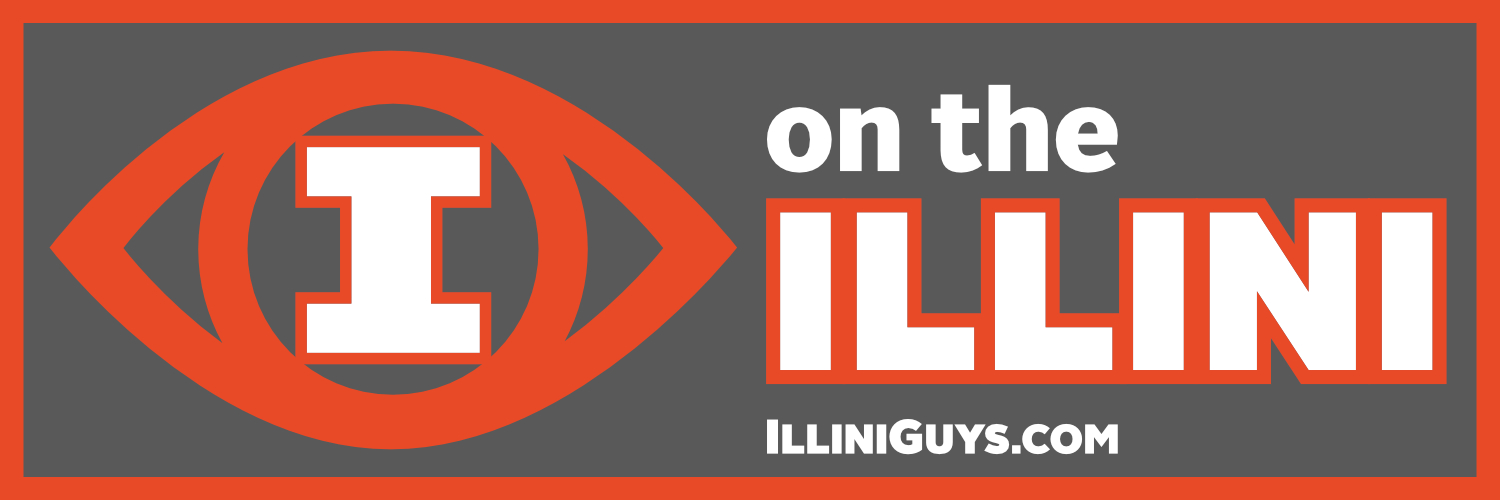
Illinois Athletics State of the Union Discussion - #487
Listen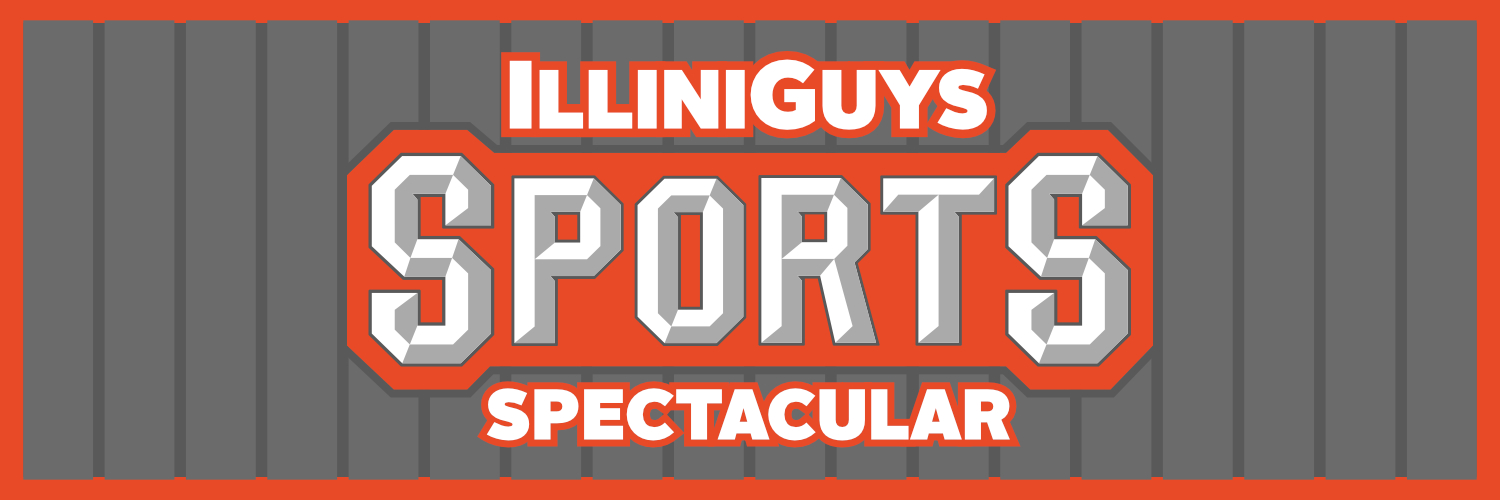
Whitman's Illini State of the Nation & the NBA Draft - 6.27.25 - S4Ep46
Listen
Zach Hamer Illini Asst BB Coach Talks KJ, Will & the NBA Draft - #486
Listen
Illini FB Recruiting Update, If Illini FB was a Movie & NIL & NBA Draft "What If" #485
Listen
Illini BB International Players & Cearah Parchment the newest IlliniGal - 6.20.25 - S4Ep45
Listen
Illini FB Recruiting Blitz & House Settlement Implications - 6.13.25 - S4Ep44
Listen
Illini Update Featuring 3-Star Illini WR Commit Kenyon Alston - #484
Listen
Illini Hoops & Football Schedules, Illini HOF Voting & More - 6.6.25 - S4Ep43
Listen
FB Portal Thoughts, Expectations, BB Update & for the 1st Time in My Life...#483
Listen
May 30 - Hr2 - S4Ep42 - Illini Recruiting, NBA Draft, Caitlin Clark & More
Listen
May 30 - Hr1 - S4Ep42 - FB & BB Contracts, FB & Golf Update & Brian Barnhart
Listen
May 23 - Hr2 - S4Ep41 - French Open, Indiana Pro Hoops & Softball
Listen
May 23 - Hr1 - S4Ep41 - Illini FB Recruiting, Golf and Track
Listen
High School Recruiting Takes the Spotlight - #482
Listen
May 16 - Hr2 - S4Ep40 - Chicago Sky, ACC Issues & Northwestern Stadium
Listen